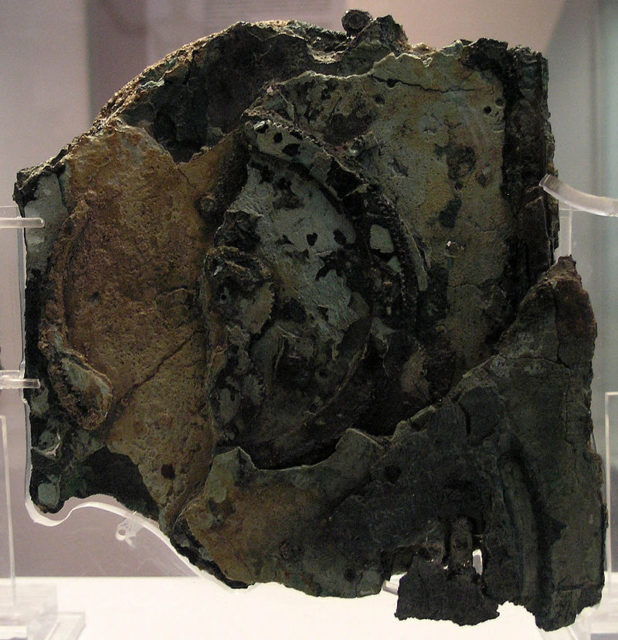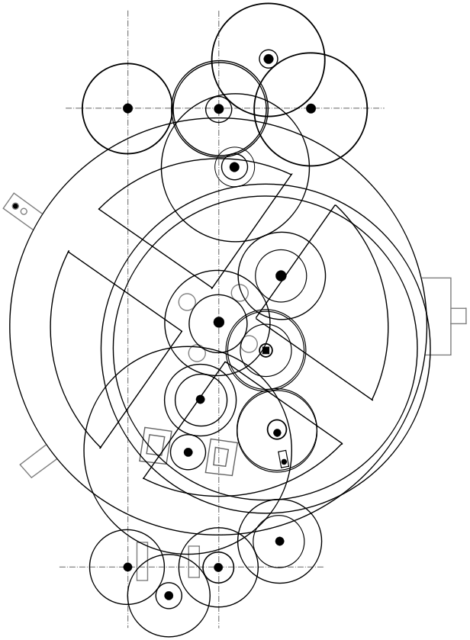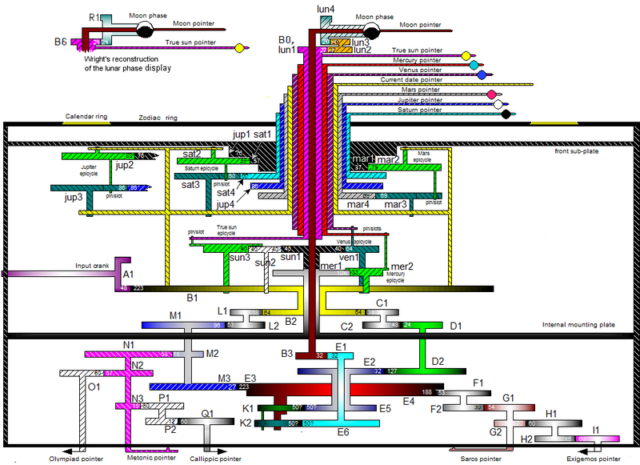In 1900, a boat carrying sponge divers encountered a storm and took refuge on the island of Antikythera in the Aegean Sea. While they were diving off the island’s coast, they discovered a 2,000-year-old shipwreck, believed to be a Greek ship that had sunk in around 60 or 70 BC.
The divers brought up jewelry, pottery, coins, and statues made of bronze and marble. Another artifact brought up was a lump of eighty-two pieces of a corroded bronze device.
The artifacts were taken to the National Museum of Archaeology in Athens for cleaning and analysis, but the bronze artifact was too delicate to be studied by hand. It wasn’t until 1951 that Derek J. de Solla Price, a physicist, and professor at Yale University, took notice of the artifact and began to study it. He employed the most advanced technology for the time, the X-ray machine, to discover its origin and purpose, but still had no answers.
Price and Greek nuclear physicist, Charalampos Karakalos, performed X-ray and gamma-ray tests and in 1974, they published a paper that listed the gear settings and inscriptions on the face of the mechanism. They believed it had been manufactured in around 87 BC, which correlates with the dates of the coins found, and that it may have come from the ancient Greek city of Pergamon. Researchers initially thought it was an astronomical clock, but others thought that would have been far too sophisticated for the time.
The pieces were made from a low-tin bronze alloy, and because the writing on the artifact is in Koine Greek, it may be safe to assume that the device was made in Greece. Why it was on a cargo ship is unknown, but because researchers believe the cargo was on its way to Rome, it may have been part of booty from the Greek islands.

The Antikythera Mechanism Research Project, which began in 2005, is an international association of researchers, backed by the National Archaeological Museum and the Hellenic Ministry of Culture in Athens, where the device now resides. Technology companies such as Hewlett-Packard from the United States and X-Tek Systems from the UK, assisted the project using advanced digital imaging, 3D technology, and a powerful microscopic X-ray device. Originally designed to search for minute cracks in turbine blades, this machine allowed researchers to decipher the minute details of the writing and gears.
The Antikythera Mechanism has earned the nickname “the first computer” because researchers found it was designed for the study of astronomical phenomena, using a mechanical, computer-like system that shows the cycles of the solar system. The construction exhibited the incorporation of standard theories of astronomy and mathematics at the time.
Professor Michael Edmunds of Cardiff University led a 2006 study of the mechanism. He stated that the device was “just extraordinary, the only thing of its kind”. He said that its astronomy was “exactly right” and that it was “more valuable than the Mona Lisa”. Christian Carman and James Evans spent several years comparing the mechanism with the Babylonian records of eclipses. Using a process of elimination, they determined that the date at which the machine was set to begin, was 205 BC.

The dial has a fixed ring on the front representing the ecliptic, with the twelve zodiac signs marked in equal thirty-degree sectors. This followed the Babylonian custom of assigning one-twelfth of the ecliptic to each zodiac sign, rather than accounting for the variables of the constellation boundaries. On the outside of the first dial is a movable ring that indicates the months and days of the Sothic Egyptian calendar – 12 months of 30 days, plus five extra days distributed throughout the year.
To work the mechanism, a person had to turn a small hand crank into the largest gear, which was linked to a crown gear that moved the date pointer on the front dial to set the correct Egyptian day. The year is unable to be set, so the current year must be known by looking up the cycles shown by various indicators from the Babylonian almanac tables for that day.

In a full rotation, the crank moves the date pointer about 78 days; an additional pointer tracks the spiral cuts in the metal. The dials had four and five full rotations of the pointers; when the pointer reached the final month at either end of the spiral, the second pointer had to be moved by hand to the other end. Turning the hand crank would also cause the interlocked gears inside the mechanism to rotate, causing simultaneous calculations of the position of the sun and moon, the moon phase, eclipse, and calendar cycles.
Read another story from us: DNA from the deep? Antikythera shipwreck produces ancient human bones
Articles, videos, and books continue to be produced by the Antikythera mechanism. As research progresses, and with the advent of 3-D printing, perhaps science can look forward to a working model of the device someday in the future.
